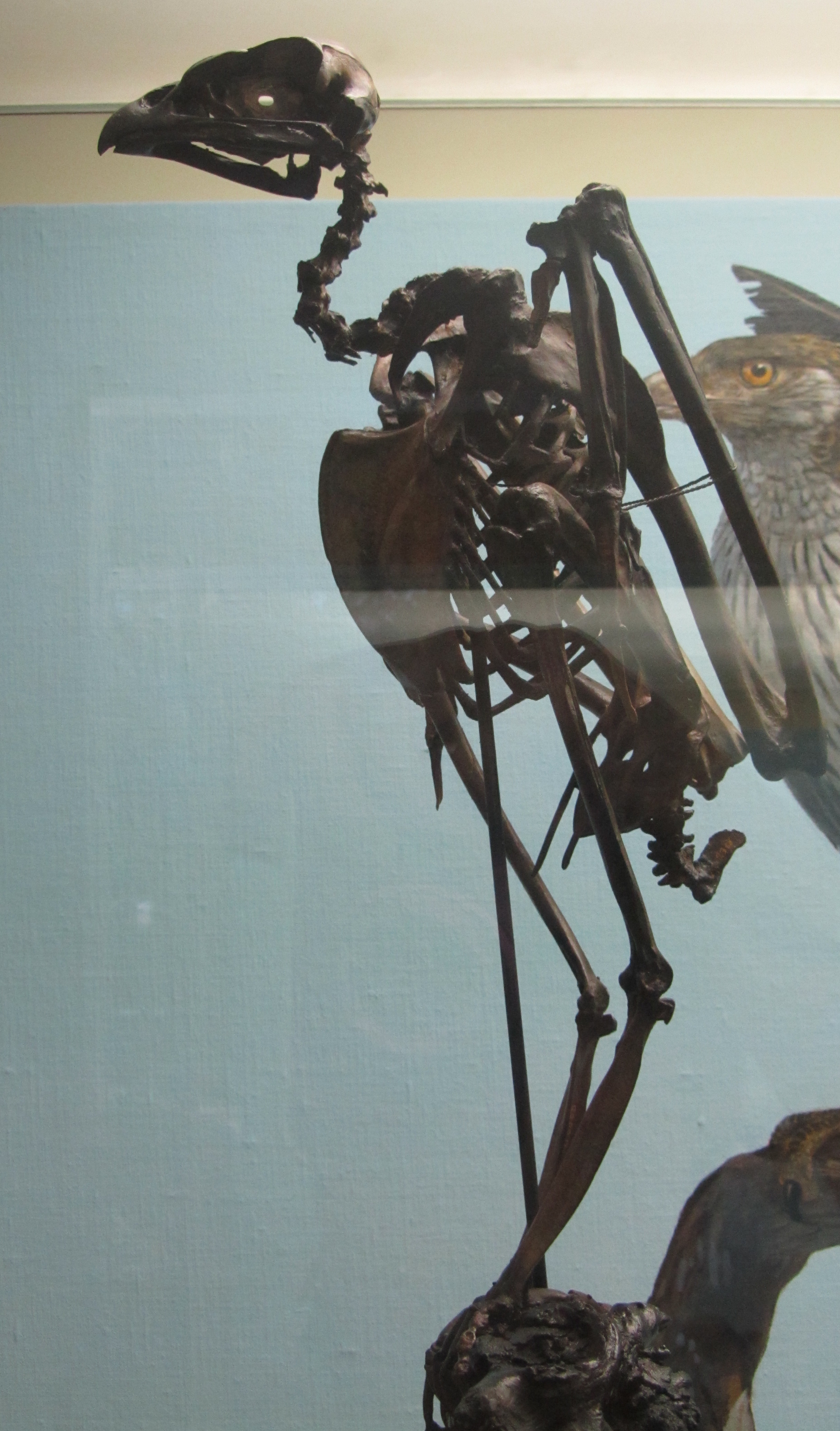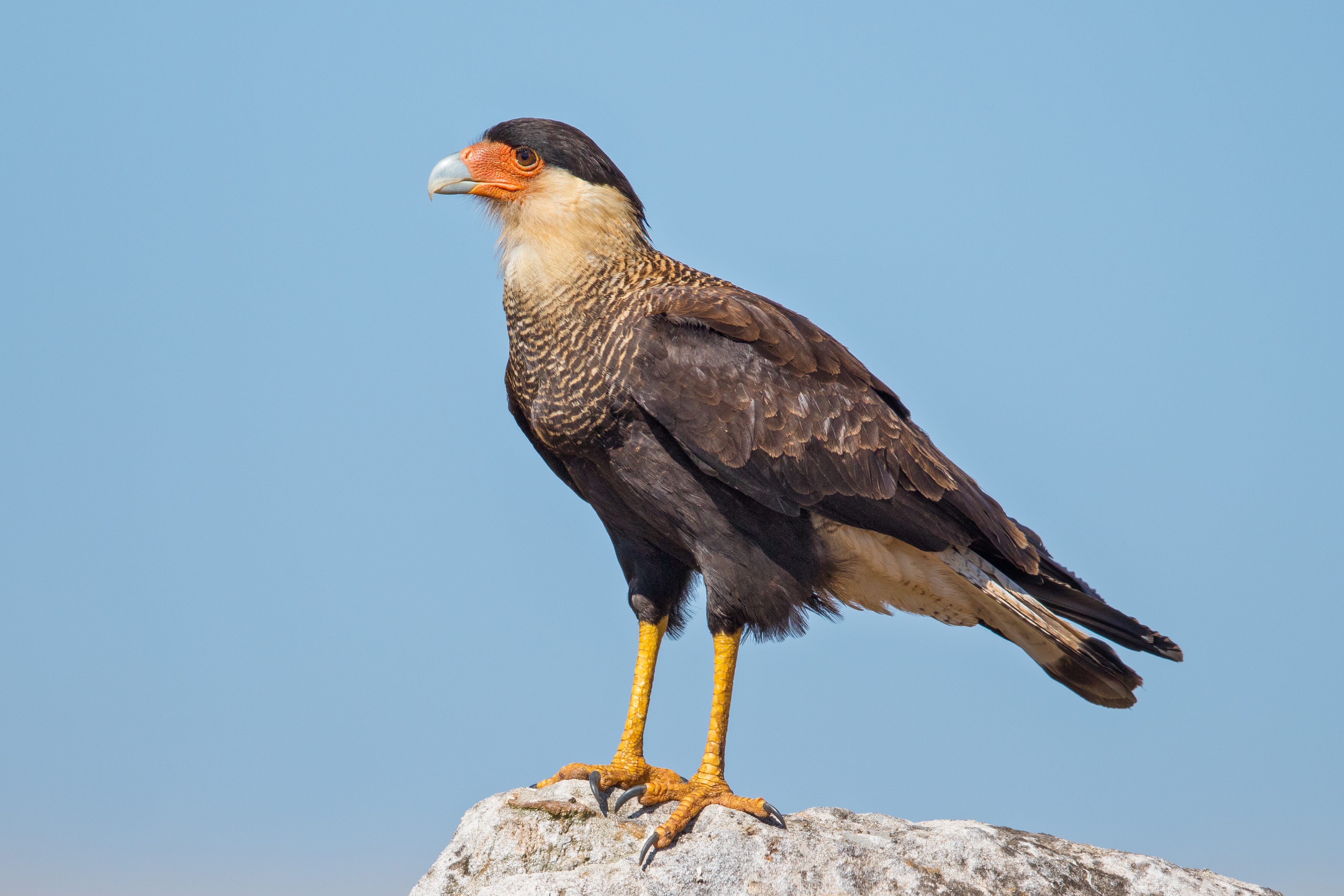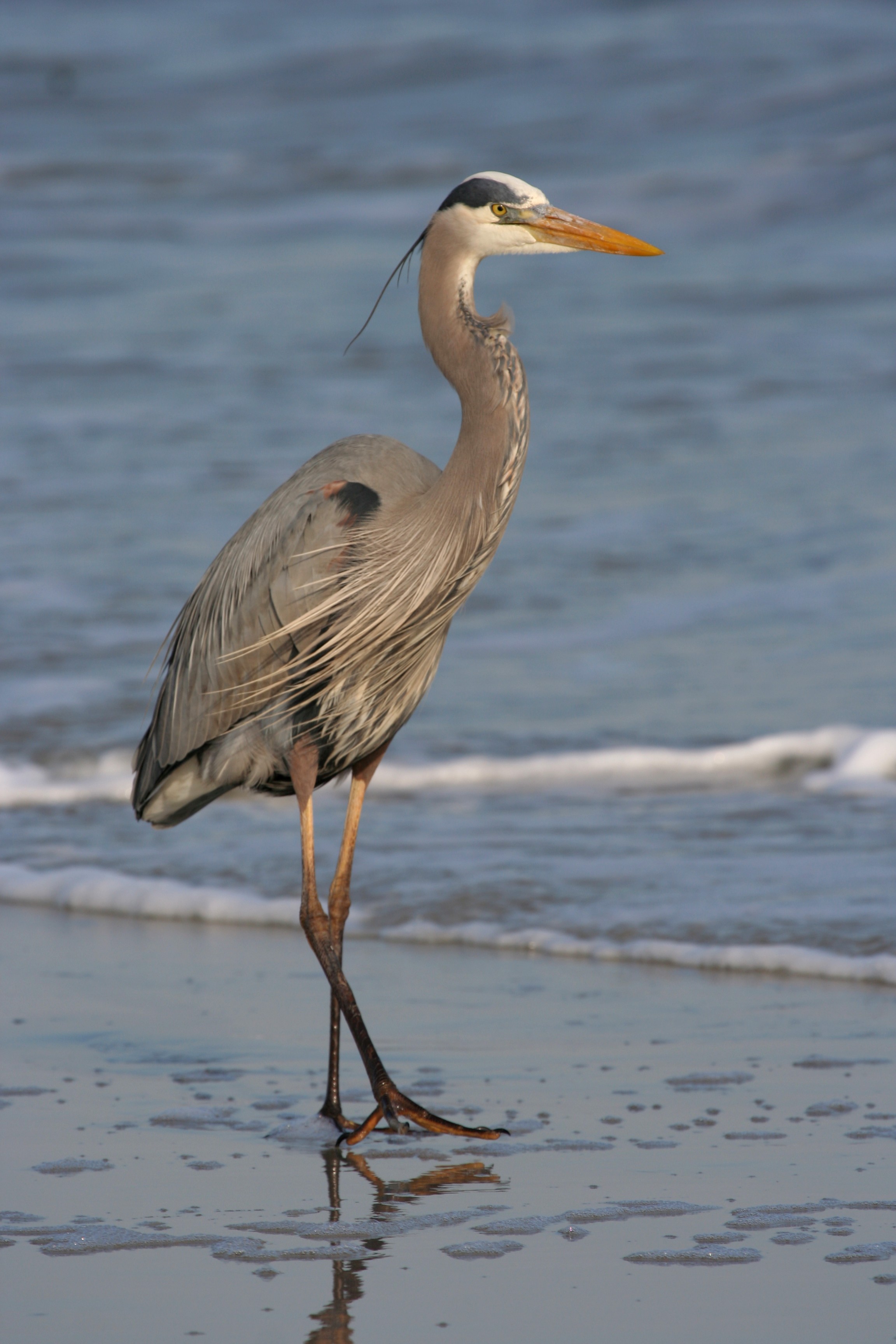|
Buteogallus Daggetti
''Buteogallus daggetti'', occasionally called "Daggett's eagle" or the "walking eagle", is an extinct species of long-legged hawk which lived in southwest North America during the Pleistocene. Initially believed to be some sort of carrion-eating eagle, it was for some time placed in the distinct genus ''Wetmoregyps'', named for Alexander Wetmore. It probably resembled a larger version of the modern-day savanna hawk, with its long legs possibly used like the secretarybird of Africa to hunt for small reptiles from a safe distance. It died out about 13,000 years ago. Fossils of ''B. daggetti'' were discovered in the La Brea Tar Pits, La Brea and Carpinteria lagerstätte in southern California, and in Nuevo León in Mexico. Its habitat included grasslands, marshlands, brushy savannas and ponds. It probably ate mostly small reptiles such as snakes. As is often the case with birds of prey, Sexual dimorphism#Birds, the female seems to have been larger than the male. Description In life ... [...More Info...] [...Related Items...] OR: [Wikipedia] [Google] [Baidu] |
Pleistocene
The Pleistocene ( ; referred to colloquially as the ''ice age, Ice Age'') is the geological epoch (geology), epoch that lasted from to 11,700 years ago, spanning the Earth's most recent period of repeated glaciations. Before a change was finally confirmed in 2009 by the International Union of Geological Sciences, the cutoff of the Pleistocene and the preceding Pliocene was regarded as being 1.806 million years Before Present (BP). Publications from earlier years may use either definition of the period. The end of the Pleistocene corresponds with the end of the last glacial period and also with the end of the Paleolithic age used in archaeology. The name is a combination of Ancient Greek () 'most' and (; Latinized as ) 'new'. The aridification and cooling trends of the preceding Neogene were continued in the Pleistocene. The climate was strongly variable depending on the glacial cycle, oscillating between cold Glacial period, glacial periods and warmer Interglacial, int ... [...More Info...] [...Related Items...] OR: [Wikipedia] [Google] [Baidu] |
Buteogallus Left Tibiotarsus Comparison (anterior)
''Buteogallus'' is a genus of birds of prey in the family Accipitridae. All members of this genus are essentially neotropical, but the distribution of a single species extends slightly into the extreme southwestern United States. Many of the species are fond of large crustaceans and even patrol long stretches of shore or riverbank on foot where such prey abounds, but some have a rather different lifestyle. Unlike many other genera of raptor, some members are referred to as "hawks", and others as "eagles". Most of the species have a characteristic tail pattern. This consists of a black base, a wide white middle band, a wide black band, and a quite narrow white band on the feathertips that is often hard to discern or may be lost when the feathers are very worn. Only the white-necked hawk and the rufous crab hawk have a very different tail patterns (see also below). Taxonomy The genus ''Buteogallus'' was introduced in 1830 by the French naturalist René Lesson to accommodate the ... [...More Info...] [...Related Items...] OR: [Wikipedia] [Google] [Baidu] |
Great Black Hawk
The great black hawk (''Buteogallus urubitinga'') is a bird of prey in the family Accipitridae, which also includes the eagles, hawks, and Old World vultures. Taxonomy The great black hawk was formally described in 1788 by the German naturalist Johann Friedrich Gmelin in his revised and expanded edition of Carl Linnaeus's ''Systema Naturae''. He placed it with the eagles, hawks and relatives in the genus '' Falco'' and coined the binomial name ''Falco urubitinga''. Gmelin's description was ultimately based on the "urubitinga" that had been described in 1648 by the German naturalist Georg Marcgrave in his ''Historia Naturalis Brasiliae''. The great black hawk is now one of nine species placed in the genus '' Buteogallus'' was introduced in 1830 by the French naturalist René Lesson. The name genus is a portmanteau of '' Buteo'', a genus introduced in 1779 by Bernard Germain de Lacépède for the buzzards and the genus '' Gallus'' introduced in 1760 by Mathurin Jacques Brisson for ... [...More Info...] [...Related Items...] OR: [Wikipedia] [Google] [Baidu] |
Caracara (genus)
''Caracara'' is a genus in the family Falconidae and the subfamily Polyborinae. It contains one extant species, the crested caracara, and one recently extinct species, the Guadalupe caracara. The crested caracara had in recent years been split into a northern species ''C. cheriway'' and a southern species ''C. plancus'', but the South American Classification Committee of the American Ornithological Society has voted to again merge the two, retaining ''C. plancus'' as the crested caracara. The taxonomists of the International Ornithologists' Union have also merged them. Appearance The crested caracara is distinguished by its long legs and medium size. The birds can reach a length of from head to tail. There are usually four points of identification of the caracara: strikingly white markings on the neck, the tip of both wings, and the tail. Along with their medium length, the caracara also has a wingspan of . When flying, the caracara is often noted to have a pattern on their ... [...More Info...] [...Related Items...] OR: [Wikipedia] [Google] [Baidu] |
Woodward's Eagle reached bigger lengths and appears to have been ...
Woodward's eagle (''Buteogallus woodwardi'') is an extinct species of black hawk that lived in North America and the Caribbean during the Late Pleistocene. Remains have been found in the La Brea Tar Pits in the United States and in Cuba. Despite the common name, the species is technically a gigantic variety of hawk as it is a member of the still extant black hawk genus, Buteogallus, within the Buteoninae subfamily that are chiefly referred to as hawks, and not the Aquilinae subfamily most eagles belong to. Description and ecology It is one of the largest birds of prey ever found, with an estimated total length , slightly larger than the Harpy eagle. Haast's eagle Haast's eagle (''Hieraaetus moorei'') is an Extinction, extinct species of eagle that lived in the South Island of New Zealand, commonly accepted to be the of Māori mythology. [...More Info...] [...Related Items...] OR: [Wikipedia] [Google] [Baidu] |
Phalanges
The phalanges (: phalanx ) are digit (anatomy), digital bones in the hands and foot, feet of most vertebrates. In primates, the Thumb, thumbs and Hallux, big toes have two phalanges while the other Digit (anatomy), digits have three phalanges. The phalanges are classed as long bones. Structure The phalanges are the bones that make up the fingers of the hand and the toes of the foot. There are 56 phalanges in the human body, with fourteen on each hand and foot. Three phalanges are present on each finger and toe, with the exception of the thumb and hallux, big toe, which possess only two. The middle and far phalanges of the fifth toes are often fused together (symphalangism). The phalanges of the hand are commonly known as the finger bones. The phalanges of the foot differ from the hand in that they are often shorter and more compressed, especially in the proximal phalanges, those closest to the torso. A phalanx is named according to whether it is Anatomical terms of locatio ... [...More Info...] [...Related Items...] OR: [Wikipedia] [Google] [Baidu] |
Coracoid
A coracoid is a paired bone which is part of the shoulder assembly in all vertebrates except therian mammals (marsupials and placentals). In therian mammals (including humans), a coracoid process is present as part of the scapula, but this is not homologous with the coracoid bone of most other vertebrates. In other tetrapods, it joins the scapula to the front end of the sternum and has a notch on the dorsal surface which, along with a similar notch on the ventral surface of the scapula, forms the socket in which the proximal end of the humerus (upper arm bone) is located. The acrocoracoid process is an expansion adjacent to this contact surface, to which the shoulderward end of the biceps brachii muscle attaches in these animals. In birds (and generally theropods and related animals), the entire unit is rigid and called scapulocoracoid. This plays a major role in bird flight. In other dinosaurs, the main bones of the pectoral girdle were the scapula (shoulder blade) an ... [...More Info...] [...Related Items...] OR: [Wikipedia] [Google] [Baidu] |
Hildegarde Howard
Hildegarde Howard (April 3, 1901 – February 28, 1998) was an American pioneer in paleornithology. She was mentored by the famous ornithologist, Joseph Grinnell, at the Museum of Vertebrate Zoology (MVZ) and in avian paleontology.Joyce Harvey & Marilyn Ogilvie (2000), ''The Biographical Dictionary of Women in Science'', Volume 1, pp.621 et seq She was well known for her discoveries in the La Brea Tar Pits, among them the Rancho La Brea eagles. She discovered and described Pleistocene flightless waterfowl at the prehistoric Ballona wetlands Ballona Wetlands Ecological Reserve (pronunciation: "Bah-yo-nuh" or "Buy-yo-nah" ) is a protected area that once served as the natural estuary for neighboring Ballona Creek. The site is located in Los Angeles County, California, just south o ... of coastal Los Angeles County at Playa del Rey. In 1953, Howard became the third woman to be awarded the Brewster Medal. She was the first woman president of the Southern California Academy of S ... [...More Info...] [...Related Items...] OR: [Wikipedia] [Google] [Baidu] |
Tibiotarsus
The tibiotarsus is the large bone between the femur and the tarsometatarsus in the leg of a bird. It is the fusion of the proximal part of the tarsus with the tibia. A similar structure also occurred in the Mesozoic Heterodontosauridae. These small ornithischian dinosaurs were unrelated to birds and the similarity of their foot bones is best explained by convergent evolution. See also * Bird anatomy References * Proctor, Nobel S. ''Manual of Ornithology: Avian Structure and Function''. Yale University Press Yale University Press is the university press of Yale University. It was founded in 1908 by George Parmly Day and Clarence Day, grandsons of Benjamin Day, and became a department of Yale University in 1961, but it remains financially and ope .... (1993) Bird anatomy Dinosaur anatomy {{ornithology-stub ... [...More Info...] [...Related Items...] OR: [Wikipedia] [Google] [Baidu] |
Natural History Museum Of Los Angeles County
Nature is an inherent character or constitution, particularly of the ecosphere or the universe as a whole. In this general sense nature refers to the laws, elements and phenomena of the physical world, including life. Although humans are part of nature, human activity or humans as a whole are often described as at times at odds, or outright separate and even superior to nature. During the advent of modern scientific method in the last several centuries, nature became the passive reality, organized and moved by divine laws. With the Industrial Revolution, nature increasingly became seen as the part of reality deprived from intentional intervention: it was hence considered as sacred by some traditions ( Rousseau, American transcendentalism) or a mere decorum for divine providence or human history ( Hegel, Marx). However, a vitalist vision of nature, closer to the pre-Socratic one, got reborn at the same time, especially after Charles Darwin. Within the various uses of th ... [...More Info...] [...Related Items...] OR: [Wikipedia] [Google] [Baidu] |
Specific Name (zoology)
In zoological nomenclature, the specific name (also specific epithet, species epithet, or epitheton) is the second part (the second name) within the scientific name of a species (a binomen). The first part of the name of a species is the name of the genus or the generic name. The rules and regulations governing the giving of a new species name are explained in the article species description. For example, the scientific name for humans is ''Homo sapiens'', which is the species name, consisting of two names: ''Homo'' is the " generic name" (the name of the genus) and ''sapiens'' is the "specific name". Etymology Historically, ''specific name'' referred to the combination of what are now called the generic and specific names. Carl Linnaeus, who formalized binomial nomenclature, made explicit distinctions between specific, generic, and trivial names. The generic name was that of the genus, the first in the binomial, the trivial name was the second name in the binomial, and the ... [...More Info...] [...Related Items...] OR: [Wikipedia] [Google] [Baidu] |
Great Blue Heron
The great blue heron (''Ardea herodias'') is a large wading bird in the heron family Ardeidae, common near the shores of open water and in wetlands over most of North and Central America, as well as far northwestern South America, the Caribbean and the Galápagos Islands. It is occasionally found in the Azores and is a rare vagrant to Europe. An all-white population found in south Florida and the Florida Keys is known as the great white heron. Debate exists about whether these white birds are a color morph of the great blue heron, a subspecies of it, or an entirely separate species. Taxonomy The great blue heron was one of the many species originally described by Carl Linnaeus in his 18th-century work, ''10th edition of Systema Naturae, Systema Naturae''. The scientific name comes from Latin , and Ancient Greek (), both meaning "heron". The great blue heron's niche in the Old World is filled by the congeneric grey heron (''Ardea cinerea''), which is somewhat smaller (), and s ... [...More Info...] [...Related Items...] OR: [Wikipedia] [Google] [Baidu] |





